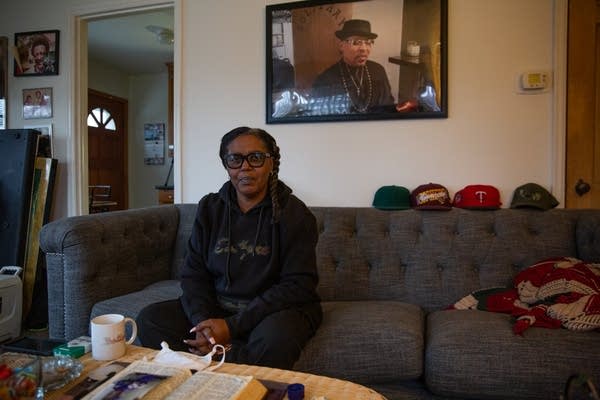Homicides go unsolved as killings in Minneapolis rise

Kimberly Barber sits in the living room of her Robbinsdale, Minn., home on Wednesday underneath a photo of her late brother, Frank Lester Barber, who was killed on Nov. 24.
Evan Frost | MPR News
Go Deeper.
Create an account or log in to save stories.
Like this?
Thanks for liking this story! We have added it to a list of your favorite stories.


